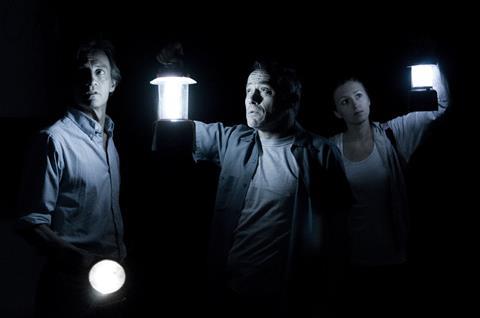Dir: Gustavo Hernandez. Uruguay. 2010. 78mins

Arsty horror gets a new twist in Uruguayan director Gustavo Hernandez’ impressive debut. After horror films shot all or in part by the protagonists (The Blair Witch Project,Paranormal Activity) or by a camera crew who are themselves characters ([REC]), we get a classic external camera eye - but one which tracks the action in real time, in a single take. More than just an exercise, this is a stylish, handheld house-of-horrors number, which like the best examples of the genre uses suspense rather than gore to rack up the tension.
It could do well in the intelligent horror niche if carefully targeted.
The film is also pioneering in its use of HD technology. This is only the second feature film in the world, and the first in Latin America, to be shot on a ‘still’ camera - the Canon EOS 5D Mark II. The resolution looks fine on a big screen even in the low-light conditions that apply for most of the film. With a budget of $6,000, this is a remarkable achievement - and one that opens up all sorts of possibilities for low-budget filmmakers with the right sort of script.
These budgetary and technical feats will no doubt form a part of the film’s marketing strategy. US distributors are apparently already circling the film, and it could do well in the intelligent horror niche if carefully targeted. Its darkly dour tone and indie look make breakout success a la Paranormal Activity unlikely, but this could be a steady performer nevertheless, with vigorous auxiliary prospects if fanboy downloading can be contained.
The film opens with a woman - or perhaps an older teenage girl, it’s difficult to gauge - following a middle-aged man across an overgrown field towards a neglected, battened up summerhouse. They turn out to be father and daughter, Wilson (Tripaldi) and Laura (Colucci - impressive, especially in view of the single take). An acquaintance, Nestor (Alonso) turns up in an SUV and they chat briefly. The house seems to belong to Nestor, while Laura and her father are there to make it look presentable so that it can be sold. Nestor warns the others not to go upstairs because it’s not safe - then he heads off to town to get supplies.
Rays of sunlight filter through the shuttered up windows as Laura’s father settles down to sleep, and encourages her to do the same. This day/night puzzle provides the first hint that all is not right, but our doubts are put aside as soon as danger looms, in the form of strange bangings from outside and upstairs. Laura persuades her skeptical father to go upstairs to investigate. When the inevitable happens, she is left alone in a house, which has been locked, on the outside with the invisible threat.
The camera tracks Laura closely; she’s illuminated only by the light of the electric torch she carries. When it goes out at one point for several minutes, we’re as in the dark as she is - seeing only brief flashes thanks to the Polaroid camera that she’s grabbed hold of. The house is tastily designed, menacing with its china animals, dusty photos and old radios, but not over-the-top creepy until two-thirds of the way in when a terrified Laura explores the upstairs rooms. Eerie electro suspense music and a horror sound design that avoids the usual clichés underline the tension.
There’s a twist towards the end - backed up by a neat shift in the camera’s point of view. To have done this all in one take is impressive; to have done it all in one take on a digital camera is well-nigh miraculous.
Production companies: Tokio Films
International sales: Elle Driver, (33) 1 5643 4878
Producer: Gustavo Rojo
Screenplay: Oscar Estevez
Cinematography: Pedro Luque
Production designer: Gustavo Rojo
Editor: Gustavo Hernandez
Music: Hernan Gonzalez
Main cast: Florencia Colucci, Abel Tripaldi, Gustavo Alonso






![The Brightest SunScreen[Courtesy HKIFF]](https://d1nslcd7m2225b.cloudfront.net/Pictures/274x183/3/5/0/1448350_thebrightestsunscreencourtesyhkiff_312678.jpg)














